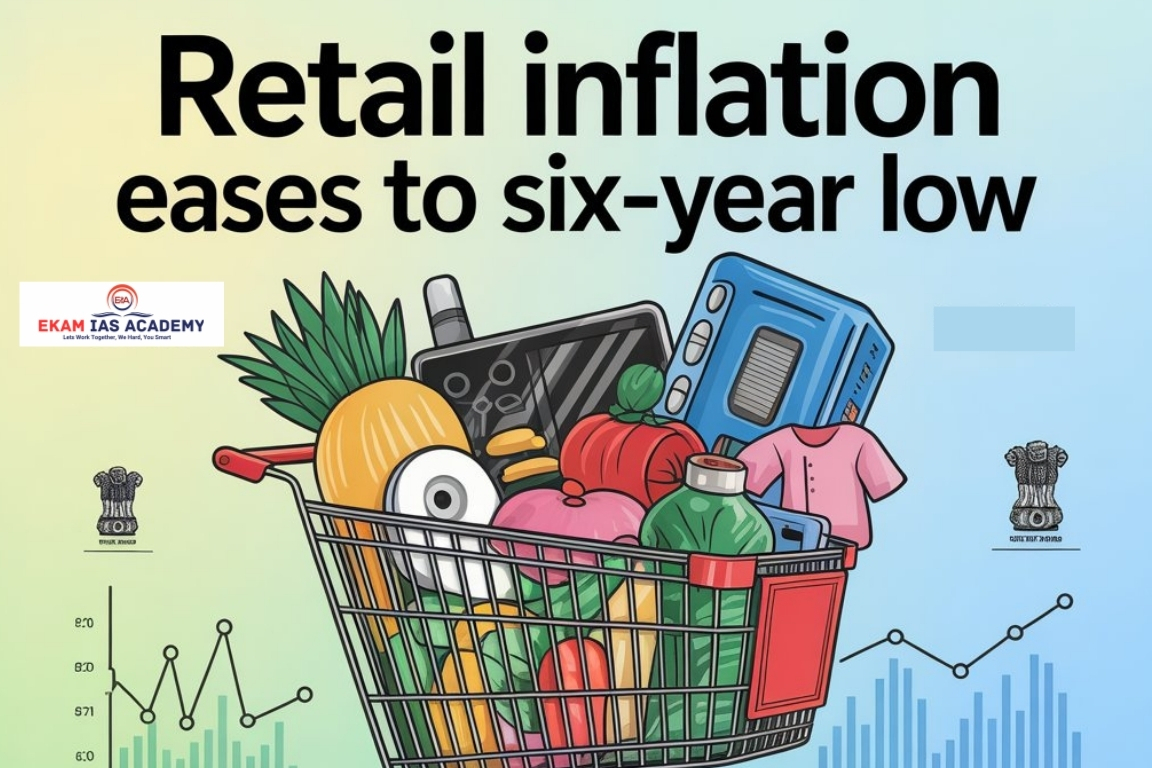Retail inflation in India dropped to a six-year low, driven mainly by lower food prices. This marks the lowest level since February 2019, raising expectations about the RBI’s future monetary decisions.
What is Retail Inflation?
- Measured by the Consumer Price Index (CPI), it reflects the change in prices of goods and services consumed by households.
- It impacts the cost of living and purchasing power of people.
Recent Trends in Inflation
- Retail inflation fell to 2.8% in May 2025, the lowest in 75 months.
- The average CPI inflation for the first two months of 2025-26 stands at 2.99%, the lowest start to a fiscal year since 2017-18.
- Food and beverages inflation declined to 1.5% in May, from 2.1% in April 2025.
Factors Behind the Decline
- Continuous fall in food inflation for seven months in a row.
- Price drops seen in: Vegetables, Pulses, Spices, Meat and fish
- These declines were partially balanced by high inflation in: Edible oils, Fruits
Implications for Monetary Policy
- The Reserve Bank of India (RBI) had recently cut interest rates to support growth.
- With inflation now significantly lower, experts expect the RBI to pause any further rate cuts for now.
- The central bank may adopt a wait-and-watch approach to avoid overcorrecting.
CONSUMER PRICE INDEX (CPI)
The Consumer Price Index (CPI) is a key economic indicator that measures the average change in prices paid by consumers for a basket of goods and services over time.
It reflects the cost of living and is widely used to track inflation in the economy.
Features of CPI:
- Measures Retail Inflation: CPI tracks the price changes of goods and services that households typically purchase, such as food, clothing, housing, fuel, education, and healthcare.
- Represents Urban and Rural Consumers: In India, CPI is released separately for CPI-Rural, CPI-Urban, and CPI-Combined (all-India).
- Base Year: The current base year for CPI in India is 2012.
- Published by: The National Statistical Office (NSO) under the Ministry of Statistics and Programme Implementation (MoSPI) publishes CPI data monthly.
CPI Categories in India:
- CPI for Industrial Workers (CPI-IW) – compiled by Labour Bureau
- CPI for Agricultural Labourers (CPI-AL)
- CPI for Rural Labourers (CPI-RL)
- CPI (Urban, Rural, and Combined) – compiled by NSO
Significance of CPI:
- Monetary Policy Tool: The RBI uses CPI (Combined) to set inflation targets and make decisions about interest rates under the Flexible Inflation Targeting framework.
- Wage and Pension Adjustments: CPI is used to adjust Dearness Allowance (DA) for government employees and welfare schemes.
- Inflation Targeting: The government’s inflation target (as per RBI mandate) is 4% with a tolerance range of ±2%, based on CPI.
Conclusion
The sharp decline in retail inflation provides relief to consumers and boosts economic stability. However, rising prices in select food items remain a concern for policymakers.





